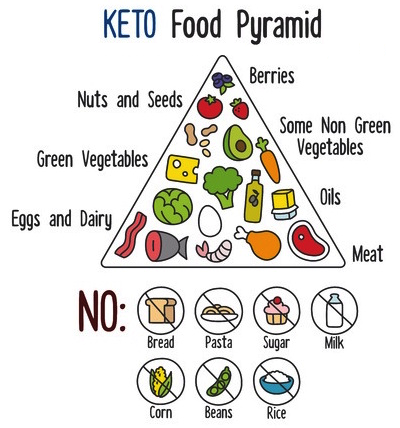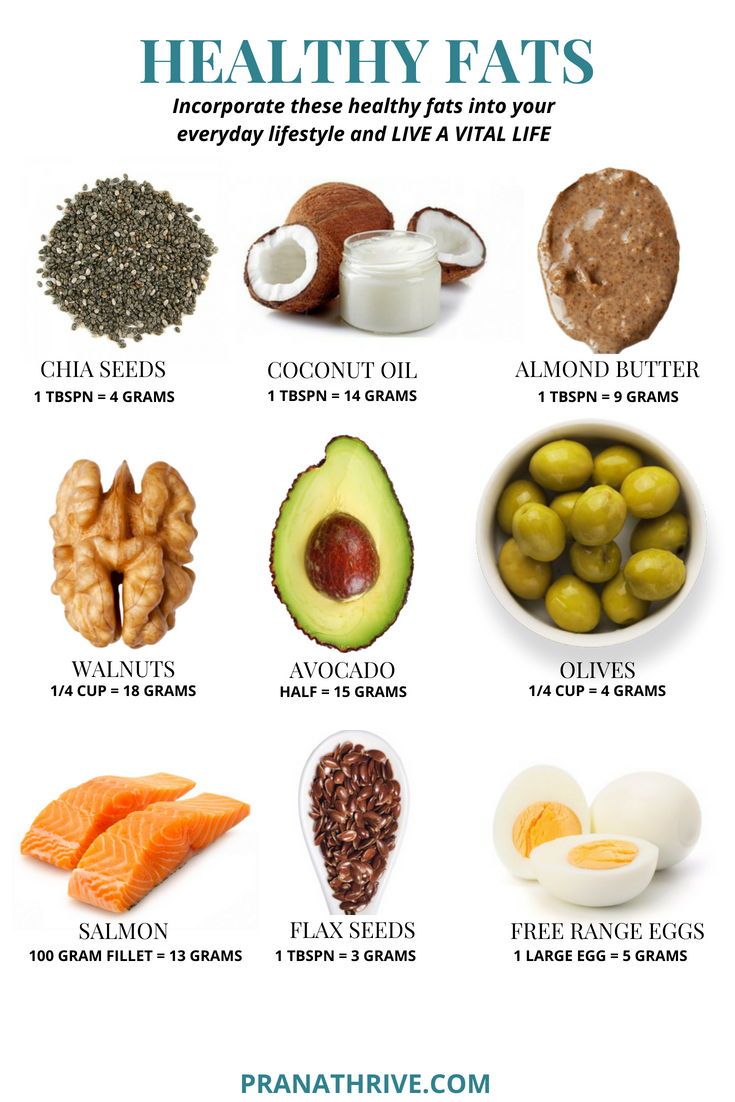Introduction To Keto
Part 1: What’s Keto
Keto is a low-carb, high fat, moderate protein lifestyle
The ketogenic diet, or keto, refers to a way of eating that can be described as low-carb, high fat, and moderate protein.
Most people on keto eat less than 20g net carbs each day and get more than 75% of their nutrients from fat (more on this below).
The goal of keto is ketosis
One of the goals of the ketogenic diet is getting into what is called ketosis.
Ketosis is a metabolic state in which your body is burning fat for fuel instead of burning carbs and sugar. I won’t go into too much detail about the science of ketosis.
Part 2: How to Get into Ketosis
As I mentioned above, most people on traditional keto, eat less than 20g net carbs per day. According to WebMD, by simply reducing the carbs and sugar that you eat, the average person can get into ketosis within 3-5 days.
You Can Tell You’re in Ketosis When…
If you’re asking yourself, “how do I know I’m in ketosis?”, then there are two mains ways to tell.
Your ketones are 1.0 or higher
The easiest way to tell if you’re in ketosis is to measure your ketones. To keep things simple, as you enter ketosis your ketone levels increase.
There are two ways that you can measure your ketones. The first way is with ketone urine strips. The second is with a ketone meter.
Personally, I use a ketone meter since it is more precise. But, ketone urine strips are a more budget-friendly option. If you use a ketone meter, then a helpful tool that I use for figuring out what the ketone readings mean is below.
Introduction To Keto
Your mood & energy are high
Another way to know you’re in ketosis is to reflect on your mood and energy.
When I’m deep into ketosis, I know it because my energy and mood are generally more positive, focused and upbeat.
I feel like I can accomplish anything, which is very different from the sluggish feelings that I have when I’m eating junk food.
Part 3: Keto Diet for Dummies – The benefits of keto
You can Lose Weight
One of the most popular benefits of keto is that it can help you lose weight.
But, there are many other benefits of the keto way of eating…
As outlined here are some more reasons that people start keto besides weight loss are:
- Manage blood sugar and insulin levels
- Reduce their Appetite
- Improve energy and mood
- Decrease risk for diabetes and heart disease
- Help lower bad cholesterol
- Help stabilize and lower high blood pressure
I started keto to manage my weight
For me, eating keto has helped me manage my weight to a healthy level and increased my mood and energy. Specifically, I’ve struggled with my weight for most of my life.
With keto, I’ve been able to have more of the foods that I enjoy without the guilt that typically would cause me to binge.
Part 4: Keto Diet for Dummies – Keto Diet Foods Explained
What do you eat on keto?
Following keto, means that my shopping cart is filled with lots of whole foods: berries, leafy greens, nuts, seeds, grass-fed meats, and eggs.
As shown in the chart below, it also means that I largely avoid bread, sugar, pasta, and other grains. Even though this sounds like it might be restrictive, there are plenty of ketogenic and low carb foods, which make eliminating most carbohydrates somewhat easy.
A photo from Google Images that lists the types of foods that you can have on the keto diet
Introduction To Keto
Does going keto mean I should pile on the butter & bacon?
Keto is high good fat, not the processed kind we’re all used to
When I tell someone that I am following the ketogenic diet, one of the first things that people mention is that this diet must be so unhealthy. They wonder how anyone, including me, could experience benefits from eating so much fat (70-75% of your daily intake is a lot of fat).
For most of the critics, they think I’m eating a ton of processed fats like those found in fast food, cakes, and cookies. In reality, as part of keto, I’m eating lots of avocados, coconut oil, MCT oil, olive oil as well as fat from organic and grass-fed meats.
A list of healthy fats that are perfect for the keto diet
One of my biggest mistakes was too much fat
When I first started keto, one of my biggest mistakes (besides not reading labels) was eating unlimited and unnecessary amounts of fat.
I figured adding butter to bacon was what I needed to get into ketosis.
WRONG…
The reality is that most people just need one source of fat in a meal. And, over-doing it with fat will probably result in eating a lot of calories. You can track the amount of fat and calories using a tool like MyFitness Pal.
Introduction To Keto
Are there keto substitutes for my favorite snacks?
Yes! As I said above, being on keto has allowed me to eat food that tastes good without having to feel sad that I’ve completely ruined all of my hard work and progress. And, most times, there is a Keto-friendly alternative for the things we crave.
If you like snacks, I enjoy a variety of nuts, such as walnuts, almonds and peanuts.
If you enjoy candy, Dark chocolate in moderation is good, the higher the cocoa ratio the better.
Are there keto meal prep options?
Yes, most all keto recipes you can meal prep and make several days out of each recipe. So you can only cook once a week, or you can freeze portions and only cook like once every 2 weeks.
Part 5: Keto Diet for Dummies – Macros & Net Carbs
What is a macro?
A macro is short for macronutrient. It refers to the main things that make up food.
When most people mention macros, they are referring to the amount of fat, protein and carbohydrates a food includes.
The standard ketogenic diet is 70-75% fat, 20% protein, and 5-10% carbohydrates. If you’re tracking calories, then you should keep that in mind, when looking at the foods you eat in a day.
To make things simpler, some people focus on eating less than 20g net carbs each day. For me, focusing on eating low carb has been what’s necessary to stay in ketosis.
Introduction To Keto
How do you calculate a net carb?
A net carb is the number of carbs that remain after subtracting fiber and sugar alcohols.
The easiest way to learn how to calculate a net carb is to look at a few labels. Look at the total carbs Minus the dietary fiber and that equals the net carbs.
Part 6: How is keto different from the Atkins & low-carb diets?
I have followed the low-carb and the Atkins diets. In my experience, the primary difference is how to divide your macros between protein and fat.
When I was following a strictly low-carb diet or Atkins, I focused on eating more protein. In fact, I often described it to people as a protein & veggies diet. On keto, I have moderate protein and high healthy fat since too much protein can cause your body to burn protein for fuel.
Part 7: Keto Diet for Dummies: Easy Keto Recipes
I started Keto Recipes as a way to share keto & low carb comfort food recipe remakes. Here on the site are some of my favorite, easy recipes.
Introduction To Keto
Part 8: Next Steps – Final Tips for Beginners
How do you get started on keto?
When I was ready to start, I made a game plan that included finding recipes, getting ketone testing tools and stocking up on keto must-haves.
Electrolytes helped reduce the negative side effects of keto flu! Keto Flu is a period of less than a week in which you are basically in withdrawal from sugar and carbs! For me, some of the side effects included getting a headache, being irritable, and being tired.


